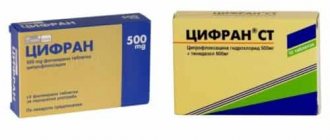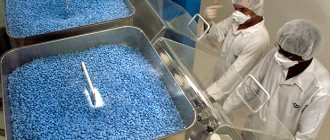Home | About us | Delivery | Advertisers | Login | Registration
The pharmacy is closed on Sundays and holidays.
- Medicines
- dietary supplementsVitamins
- Categories from A to Z
- Brands from A to Z
- Products from A to Z
- Medical equipment
- beauty
- Child
- Care
- Honey products appointments
- Herbs and herbal teas
- Medical nutrition
- Journey
- Making medicinesStock
Pharmacy online is the best pharmacy in Almaty, delivering medicines to Almaty. An online pharmacy or online pharmacy provides the following types of services: delivery of medicines, medicines to your home. Online pharmacy Almaty or online pharmacy Almaty delivers medicines to your home, as well as home delivery of medicines in Almaty.
my basket
Apteka84.kz is an online pharmacy that offers its customers medicines, medicinal and decorative cosmetics, dietary supplements, vitamins, baby food, intimate products for adults, medical equipment and thousands of other medical and cosmetic products at low prices. All data presented on the Apteka84.kz website is for informational purposes only and is not a substitute for professional medical care. Apteka84.kz strongly recommends that you carefully read the instructions for use contained in each package of medicines and other products. If you currently have any symptoms of the disease, you should seek help from a doctor. You should always tell your doctor or pharmacist about all the medicines you take. If you feel you need further help, please consult your local pharmacist or contact our GP online or by telephone.
© 2021 Pharmacy 84.
Thiogamma 600 mg 30 pcs. film-coated tablets
pharmachologic effect
Metabolic agent.
Composition and release form Thiogamma 600 mg 30 pcs. film-coated tablets
Tablets - 1 tablet:
- active ingredient: thioctic acid – 600 mg;
- excipients: hypromellose 25.00 mg, colloidal silicon dioxide 25.00 mg, microcrystalline cellulose 49.00 mg, lactose monohydrate 49.00 mg, croscarmellose sodium 16.00 mg, talc 36.364 mg, simethicone 3.636 mg (dimethicone and silicon dioxide colloidal 94:6), magnesium stearate 16.00 mg; shell: macrogol 6000 - 0.60 mg, hypromellose 2.80 mg, talc 2.00 mg, sodium lauryl sulfate 0.025 mg.
Film-coated tablets, 600 mg. 10 film-coated tablets in a blister made of PVC/PVDC/aluminum foil. 3, 6 or 10 blisters along with instructions for use in a cardboard box.
Description of the dosage form
Oblong, biconvex film-coated tablets, with a smooth and slightly shiny surface, with one score line on both sides, yellow in color with possible inclusions of white and dark yellow.
Directions for use and doses
Prescribe 600 mg (1 tablet) of Thiogamma® orally once a day. The tablets are taken on an empty stomach, without chewing, with a small amount of liquid.
The duration of treatment is 30 - 60 days, depending on the severity of the disease. The course of treatment can be repeated 2-3 times a year.
Pharmacodynamics
Thioctic acid is an endogenous antioxidant (binds free radicals).
In the body it is formed during the oxidative decarboxylation of alpha-keto acids.
As a coenzyme of mitochondrial multienzyme complexes, it participates in the oxidative decarboxylation of pyruvic acid and alpha-keto acids. Helps reduce blood glucose concentrations and increase glycogen in the liver, as well as reduce insulin resistance.
Participates in the regulation of lipid and carbohydrate metabolism, affects cholesterol metabolism, improves liver function, has a detoxification effect in cases of poisoning with heavy metal salts and other intoxications. It has hepatoprotective, hypolipidemic, hypocholesterolemic, hypoglycemic effects. Improves trophism of neurons.
In diabetes mellitus, thioctic acid reduces the formation of advanced glycation end products, improves endoneurial blood flow, increases glutathione content to physiological values, which ultimately leads to an improvement in the functional state of peripheral nerve fibers in diabetic polyneuropathy.
Pharmacokinetics
When taken orally, it is quickly and completely absorbed from the gastrointestinal tract; simultaneous intake with food reduces absorption. Bioavailability is 30-60% due to the “first pass” effect through the liver. The time to reach the maximum concentration (4 μg/ml) is about 30 minutes. Metabolized in the liver by side chain oxidation and conjugation. Thioctic acid and its metabolites are excreted by the kidneys (80-90%), in small quantities - unchanged. Half-life 25 min.
Indications for use Thiogamma 600 mg 30 pcs. film-coated tablets
Diabetic polyneuropathy and alcoholic polyneuropathy.
Contraindications
Hypersensitivity to thioctic acid or other components of the drug.
Children under 18 years of age.
Hereditary galactose intolerance, lactase deficiency or glucose-galactose malabsorption.
Pregnancy and breastfeeding period.
Before taking the drug, be sure to consult your doctor.
Application of Thiogamma 600 mg 30 pcs. film-coated tablets during pregnancy and breastfeeding
The use of the drug Thiogamma during pregnancy and lactation is contraindicated.
special instructions
Patients with rare hereditary fructose intolerance, glucose-galactose malabsorption syndrome or glucose-isomaltose deficiency should not take Thiogamma®.
In patients with diabetes mellitus, constant monitoring of blood glucose concentrations is necessary, especially at the initial stage of therapy. In some cases, it is necessary to reduce the dose of insulin or oral hypoglycemic drug to avoid the development of hypoglycemia.
If hypoglycemia develops, you must immediately stop taking Thiogamma®.
If symptoms of hypersensitivity appear, you must immediately stop taking Thiogamma®.
Patients taking Thiogamma® should avoid drinking alcohol.
Alcohol consumption during therapy with Thiogamma® reduces the therapeutic effect and is a risk factor contributing to the development and progression of neuropathy.
1 film-coated tablet of Thiogamma® 600 mg contains less than 0.0041 bread units.
Cases of the development of autoimmune insulin syndrome (AIS) during treatment with thioctic acid have been described. The possibility of AIS is determined by the presence of the HLA-DRB1*04:06 and HLA-DRB1*04:03 alleles in patients.
Impact on the ability to drive vehicles and operate machinery
Taking the drug Thiogamma® does not affect the ability to drive vehicles or operate other mechanisms.
Overdose
Symptoms: nausea, vomiting, headache.
When taking doses of 10 to 40 g of thioctic acid in combination with alcohol, cases of intoxication, including death, were observed. Symptoms of acute overdose: psychomotor agitation or confusion, usually followed by the development of generalized convulsions and the formation of lactic acidosis.
Cases of hypoglycemia, shock, rhabdomyolysis, hemolysis, disseminated intravascular coagulation, bone marrow depression and multiorgan failure have also been described.
Treatment is symptomatic. There is no specific antidote.
Side effects Thiogamma 600 mg 30 pcs. film-coated tablets
The frequency of adverse reactions is given in accordance with the WHO classification: Very common ≥ 1/10 prescriptions; Often ≥ 1/100 to ≤ 1/10 prescriptions; Uncommon ≥ 1/1000 to ≤ 1/100 prescriptions; Rarely ≥ 1/10000 to ≤ 1/1000 prescriptions; Very rare ≤ 1/10,000 prescriptions; Frequency unknown - cannot be determined from available data.
Very rarely (
Gastrointestinal (GIT) disorders: nausea, vomiting, abdominal pain, diarrhea.
Immune system disorders: allergic reactions (up to the development of anaphylactic shock), skin rash, urticaria, itching; autoimmune insulin syndrome (AIS), clinical manifestations of AIS can be: dizziness, sweating, muscle tremors, increased heart rate, nausea, headache, confusion, impaired visual perception, loss of consciousness, coma.
Nervous system disorders: changes or disturbances in taste sensations.
Metabolic and nutritional disorders: due to improved glucose absorption, a decrease in blood glucose concentration is possible. In this case, symptoms of hypoglycemia may occur - dizziness, increased sweating, headache, visual disturbances.
Frequency unknown (cannot be determined from available data):
Skin and subcutaneous disorders: eczema.
If any of the side effects indicated in the instructions get worse, or you notice any other side effects not listed in the instructions, tell your doctor.
Drug interactions
Thioctic acid enhances the anti-inflammatory effect of glucocorticosteroids. With the simultaneous administration of thioctic acid and cisplatin, a decrease in the effectiveness of cisplatin is observed.
Thioctic acid binds metals, so it should not be prescribed simultaneously with drugs containing metals (for example, preparations of iron, magnesium, calcium) - the interval between doses should be at least 2 hours. When thioctic acid and insulin or oral hypoglycemic drugs are used simultaneously, their effect may intensify.
Ethanol and its metabolites weaken the effect of thioctic acid.
If you are already taking other medications or are planning to take them, be sure to consult your doctor before taking Thiogamma®.
Instructions for use THIOGAMMA® 600 (THIOGAMMA® 600)
Regular alcohol consumption is a significant risk factor for the onset and progression of polyneuropathy and may affect the results of treatment with thioctic acid. Patients taking Thiogamma® 600 should avoid drinking alcohol.
In patients with diabetes mellitus, constant monitoring of blood glucose concentrations is necessary, especially at the beginning of therapy. In some cases, it is necessary to reduce the dose of insulin or oral hypoglycemic drug to avoid the development of hypoglycemia.
Information for patients with diabetes:
- 1 tablet contains less than 0.0041 XE (bread units).
Thiogamma® 600 contains lactose, therefore patients with hereditary galactose intolerance, lactase deficiency or glucose-galactose malabsorption should not take the drug.
Cases of autoimmune insulin syndrome (AIS) have been reported during treatment with thioctic acid. Patients with certain alleles, such as HLA-DRB1*04:06 and HLA-DRB1*04:03, are more susceptible to developing AIS when treated with thioctic acid. The HLA-DRB1*04:03 allele (susceptibility to AIS, odds ratio: 1.6) is more common in Caucasians (in Southern Europe more often than in Northern Europe). Allele HLA-DRB1*04:06 (susceptibility to AIS, odds ratio:
- 56.6), is mainly found in individuals from Japan and Korea. Autoimmune insulin syndrome should be considered in the differential diagnosis of spontaneous hypoglycemia in patients receiving thioctic acid.
Impact on the ability to drive vehicles and operate machinery
When using the drug, care must be taken when driving vehicles and engaging in other potentially hazardous activities that require increased concentration and speed of psychomotor reactions. In case of adverse reactions from the nervous system, it is necessary to refrain from driving vehicles and working with moving mechanisms.
Preclinical safety data
Acute and chronic toxicity
The toxicity profile is characterized by symptoms of disorders of the autonomic and central nervous systems. After repeated administration of toxic doses, the main target organs were the liver and kidneys.
Mutagenicity and carcinogenicity
Studies examining the mutagenic potential did not reveal gene or chromosomal mutations. Data on the carcinogenic potential of thioctic acid were obtained from an oral carcinogenicity study in rats. The results of a carcinogenicity study of thioctic acid using N-nitrosodimethylamine (NDEA) were negative.
Reproductive toxicity
When thioctic acid was administered orally to rats in doses up to 68.1 mg/kg, no effect on fertility and early embryonic development was detected. When administered to rabbits in the form of intravenous injections in a range of doses, including doses toxic to the maternal body, the formation of malformations was not detected.

